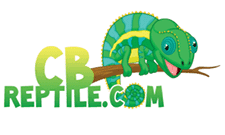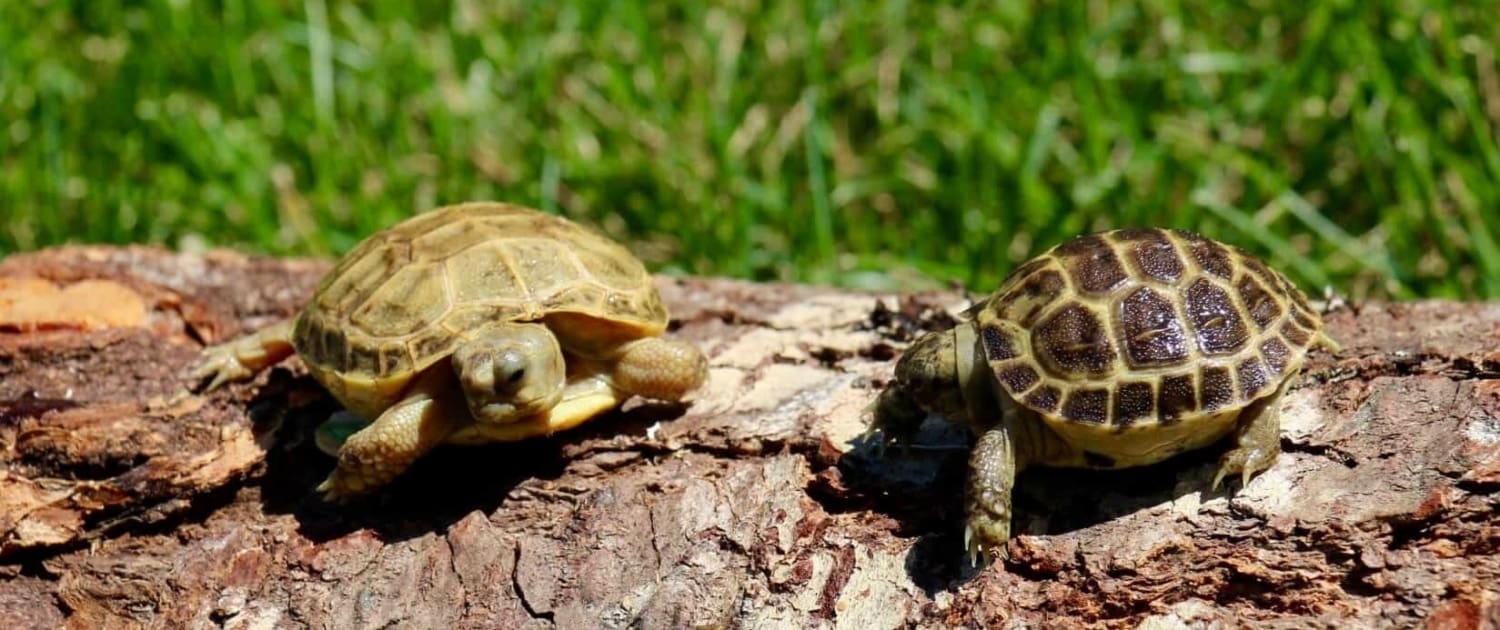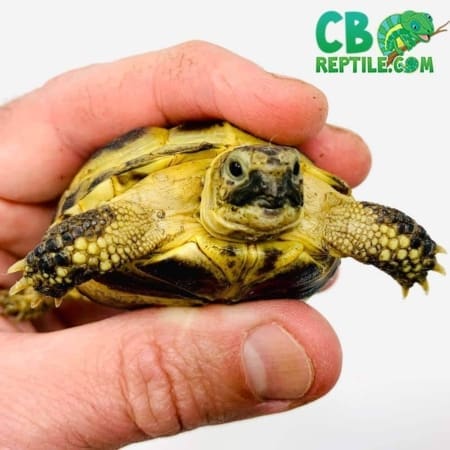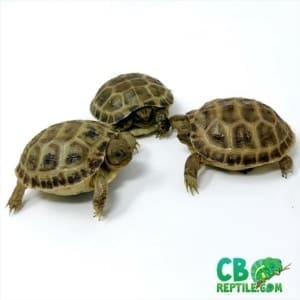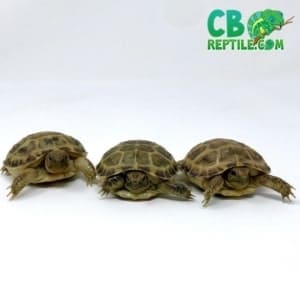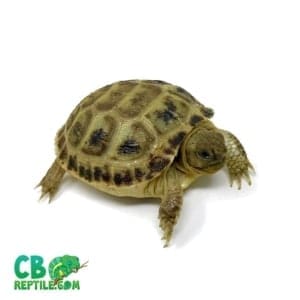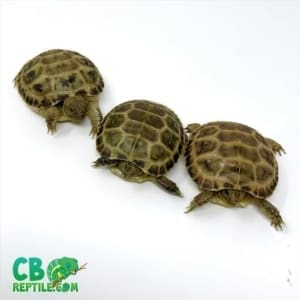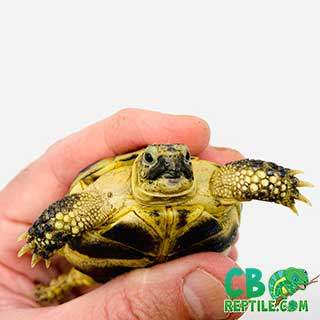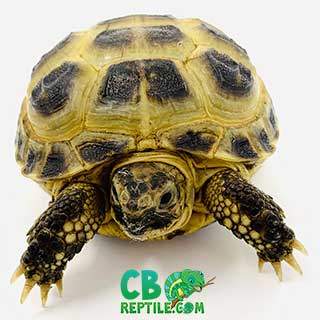Russian Tortoise Care Sheet
Before purchasing your new captive bred baby Russian tortoise for sale online, please do your homework and learn about proper Russian Tortoise Care, Russian Tortoise Diet, Russian Tortoise breeding and more. Be sure to select only a captive bred russian torotise for sale from an experienced Russian tortoise breeder.
Range: From far Eastern Europe and the countries of Uzbekistan and Kazakhstan to China, the Russian Tortoise, also known as Horsfield’s tortoise, is found over vast areas of dry arid habitat.
Russian tortoise Lifespan:
50-90 years
Russian tortoise size:
A small tortoise of 4-8 inches Appearance: The females grow slightly larger than the males, who tend to have a longer tail that is generally tucked to the side. Females tend to have flared scutes on their shells, while males do not. Coloration varies, but the shell is usually a ruddy brown or black, fading to yellow between the scutes, and the body itself straw-yellow and brown.
Russian tortoise Housing:
The most useful form of indoor accommodation for Russian tortoises is a tortoise table. A reasonable size for a hatchling is 2 foot by 3 foot and as it grows the size of this habitat should be increased. For an adult Hermanns tortoise the indoor habitat should be at least 4 foot by 2 foot. Holes can be cut into the bottom of your tortoise table to allow for the sinking of food and water dishes, making them flush with the surface for easier animal access. The water dish in the habitat should be large enough to allow the tortoise to soak in, whilst remaining shallow enough to protect from drowning.
Russian tortoise substrate
As a substrate in the dry portion of the environment a mixture of topsoil and childrens play sand or organic potting mix mixed with organic soil, and cypress bark on top works well, ideally deep enough to allow burrowing. If sand is used in the substrate this area should also not have food placed directly upon it as the sand can build up in the tortoises GI tract leading to possible impaction and even death. A completely separate sand-free area in the habitat should be utilized to feed.
Russian tortoise heating and lighting
In one corner of the environment a heat spot lamp should be positioned to provide artificial basking facilities. This should be positioned to provide a basking spot of 92-97 degrees F in that section of the habitat, while the rest of the enclosure can be heated with a gradiant down to 80 degrees F, and a drop at night. Heating sources should always be run through a thermostat. The enclosure should also be equipped with a full spectrum fluorescent light to provide for UVB. A UVB source is necessary for Vitamin D3 syntheses (needed in calcium metabolism). There should be a hide box located in the corner away from the basking spot to allow the animal a cooler dim retreat. Russian tortoises can handle cooler weather quite well, but must be kept in an area that remains dry, as the cold combined with a damp environment can lead to disease.
During warm summer days allow your Russian tortoise to roam in a predator free enclosed garden. Ensure that there is adequate shade, hiding spots, and access to a shallow dish of water. A dry grassy area that allows grazing is ideal.
Russian tortoise Diet:
Russian tortoises should be fed a diet of grasses, vegetation and flowers of non-poisonous plants and weeds, and leafy greens. If possible in warmer months, allow your tortoise to graze naturally in the garden on grasses, weeds and plants. As a supplement and where not possible to allow natural grazing, feed a variety of greens as well as hay.
Examples:
* Spring greens (spring mix from the grocery store or produce shop)
* Dandelion greens
* Kale (in moderation)
* Romaine lettuce (in moderation)
* Clover
* Collards
* Mustard greens
* Timothy hay
Avoid ( DO NOT EVER FEED THIS!) :
* Fruit
* Grains (bread, pasta etc)
* Human foods
* Pellet type complete tortoise foods besides MAZURI tortoise Chow
* Dog and cat food or any animal protein
UVB levels in the tortoises natural habitat are vastly higher than anything we experience in the UK, so food must be lightly dusted with a vitamin and mineral supplement which contains vitamin D3 and calcium daily. Cuttlebone is a good source of calcium and can be left in the enclosure at all times.
Additional: This species hibernates, but only allow a healthy tortoise to do so and does not NEED To hibernate.
